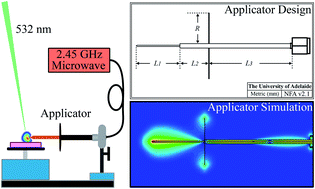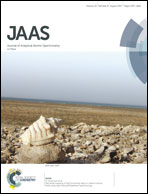Design and application of near-field applicators for efficient microwave-assisted laser-induced breakdown spectroscopy
Abstract
Laser-induced breakdown spectroscopy (LIBS) can benefit from sustaining laser generated plasma with microwaves to enhance elemental detection sensitivity. To achieve efficient microwave coupling, critical factors, such as the electromagnetic environment and reflection coefficient of the coupling device, need to be considered to quantitatively predict the electric-field strength in the plasma location. 3D full-wave electromagnetic simulations were used to design near-field microwave applicators suitable to maximize microwave coupling into the short-lived laser-induced plasmas. The simulations pointed out to four effective and practical designs containing varieties of isolation techniques. The four developed microwave applicators were then used to improve the detection of copper present in a mineral ore solid sample, using LIBS and imaging techniques simultaneously. It was found that, with 1.2 kW microwave power, an applicator design with a 30 mm diameter ground plane can significantly boost the signal of copper line 324.754 nm with a factor of 849, which is, to the authors' best knowledge, the highest reported value. Furthermore, an outstanding signal to noise ratio of 166 was recorded in a solid sample containing a certified 3.38 μg g−1 copper concentration.



 Please wait while we load your content...
Please wait while we load your content...